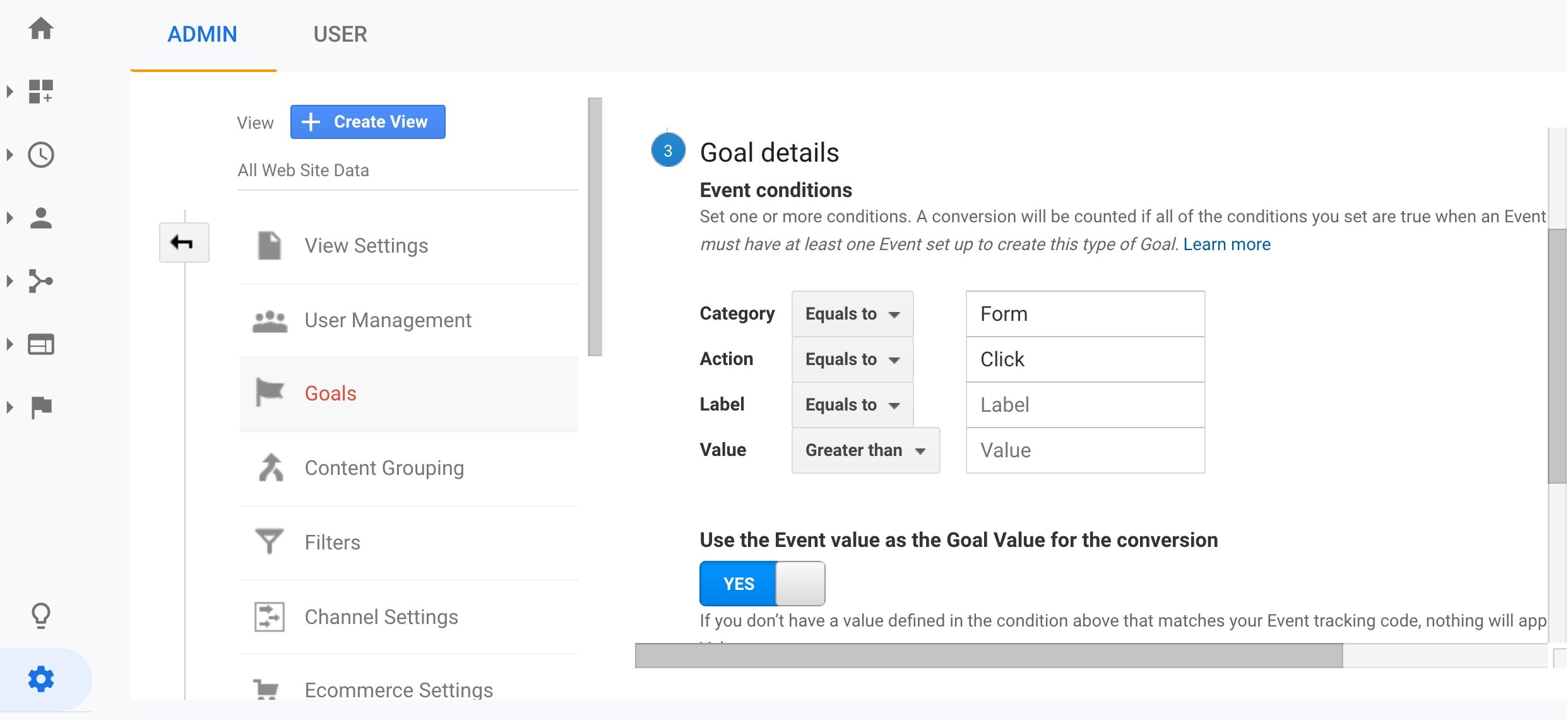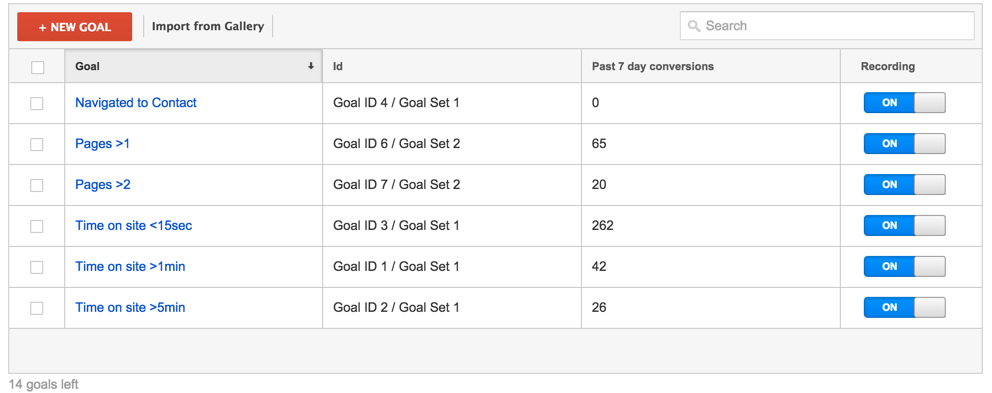Discover the Limitations of Google Analytics Goals: Introducing the Information Kind That Remain Untrackable
As businesses significantly depend on data-driven decision-making, understanding the restrictions of tools like Google Analytics ends up being vital. While Google Analytics Goals offer useful understandings right into individual communications, there exist data types that thwart tracking, posturing difficulties to a detailed understanding of user habits. These untrackable information types question concerning the accuracy and efficiency of the analytics data that companies heavily trust for their digital techniques. Curious to uncover the covert blind places in your information evaluation procedure?
Incomplete Individual Trip Tracking
Insufficient customer journey monitoring within Google Analytics can impede the capacity to precisely assess user behavior. When the user journey is not fully tracked, there are gaps in the data that avoid a detailed understanding of just how customers connect with a web site. This lack of insight can cause missed out on opportunities for optimization and improvements to the user experience.
One common issue with insufficient customer trip monitoring is the inability to see the full course that customers take in the past finishing a goal or leaving the site. Without this details, it is testing to determine where individuals may be coming across barriers or rubbing points that avoid them from transforming. In addition, insufficient monitoring can cover the effect of particular advertising and marketing efforts or website modifications on user habits.
To resolve this limitation, it is crucial to establish up correct monitoring mechanisms within Google Analytics to catch the entire user trip. This may entail establishing event monitoring, goal funnels, or making use of tools like Google Tag Supervisor to make sure that no essential interactions go unrecorded. By acquiring an extensive view of the user trip, website proprietors can make more informed decisions to improve customer interaction and drive conversions.
Acknowledgment Obstacles
Navigating through acknowledgment obstacles in Google Analytics needs a thorough understanding of exactly how various touchpoints contribute to the total conversion process. Attribution challenges emerge from the complexity of modern-day customer trips, where customers connect with numerous networks prior to converting.
One typical attribution challenge is the difficulty in connecting conversions to the appropriate resource, specifically in instances where users communicate with several networks before transforming. This can bring about inaccuracies in identifying which advertising initiatives are driving one of the most conversions. Additionally, cross-device monitoring poses another acknowledgment challenge, as users typically change between devices during their trip, making it testing to track their interactions effortlessly. Marketers have to carefully analyze and evaluate attribution information to make educated choices and maximize their marketing approaches successfully.
Offline Conversions
Provided the challenges related to attributing conversions precisely in online networks, the measurement of offline conversions provides a significant possibility for marketing experts looking for a more thorough understanding of their customers' trip. Offline conversions refer to actions that consumers absorb the real world, such as making acquisitions in brick-and-mortar stores or over the phone, going to occasions, or engaging with printed products - what data is google analytics goals unable to track. These conversions are critical for companies that operate both online and offline, as they supply important understandings into the efficiency of advertising and marketing campaigns across different touchpoints
Tracking offline conversions traditionally positioned a considerable obstacle for online marketers, as it was challenging to link these activities back to details online interactions precisely. Nevertheless, with innovations in technology, such as the combination of CRM systems, one-of-a-kind identifiers, and discount coupon codes, organizations can currently link the gap between online and offline data to acquire a much more alternative view of consumer habits. By properly gauging offline conversions, online marketers can enhance their techniques, designate sources a lot more successfully, and ultimately improve the general client experience.
Cross-Device Tracking
Cross-device tracking plays an important role in understanding the interconnected nature of customers' digital interactions throughout several devices. In today's omnichannel globe, where individuals seamlessly switch over in between desktops, tablet computers, and smartphones, tracking their behavior throughout these devices is necessary for online marketers to acquire a comprehensive view of their customer useful content journey.

In addition, personal privacy worries and regulations such as GDPR and CCPA have better complex cross-device tracking. With customers requiring more control over their data and boosted constraints on monitoring technologies, online marketers have to find privacy-compliant and innovative ways to connect check out here individual interactions across gadgets.
Dynamic Content Engagement
Comprehending individual involvement with vibrant web content is essential in optimizing digital advertising and marketing approaches for enhanced target market communication. Dynamic material refers to website elements that transform based upon individual behavior, choices, or various other aspects, providing an individualized experience. Nonetheless, tracking individual interactions with dynamic web content presents challenges for conventional analytics tools like Google Analytics.
While Google Analytics can track basic communications like clicks and page views, it might have a hard time to capture more nuanced involvements within vibrant material. what data is google analytics goals unable to track. Metrics such as time invested in specific vibrant elements, float activities, or interactions within pop-ups are often not conveniently quantifiable utilizing basic tracking methods. This restriction impedes marketers' capacity to totally comprehend exactly how customers are engaging with dynamic content and customize their approaches accordingly

Conclusion
To conclude, Google Analytics objectives have constraints in tracking read this article incomplete individual journeys, attributing conversions precisely, catching offline conversions, tracking cross-device interactions, and gauging dynamic material involvement. These restrictions highlight the significance of exploring extra tracking techniques and tools to acquire a more thorough understanding of user actions and conversions beyond what Google Analytics can give.
While Google Analytics Goals deal important understandings into customer communications, there exist information kinds that elude monitoring, posturing obstacles to a comprehensive understanding of user behavior.Incomplete user trip monitoring within Google Analytics can prevent the capacity to properly assess individual habits. When the individual journey is not fully tracked, there are spaces in the data that prevent a comprehensive understanding of how customers engage with a website.One usual problem with incomplete individual journey monitoring is the lack of ability to see the full path that users take before completing an objective or leaving the website. By obtaining a thorough sight of the individual journey, web site owners can make more educated decisions to enhance user interaction and drive conversions.